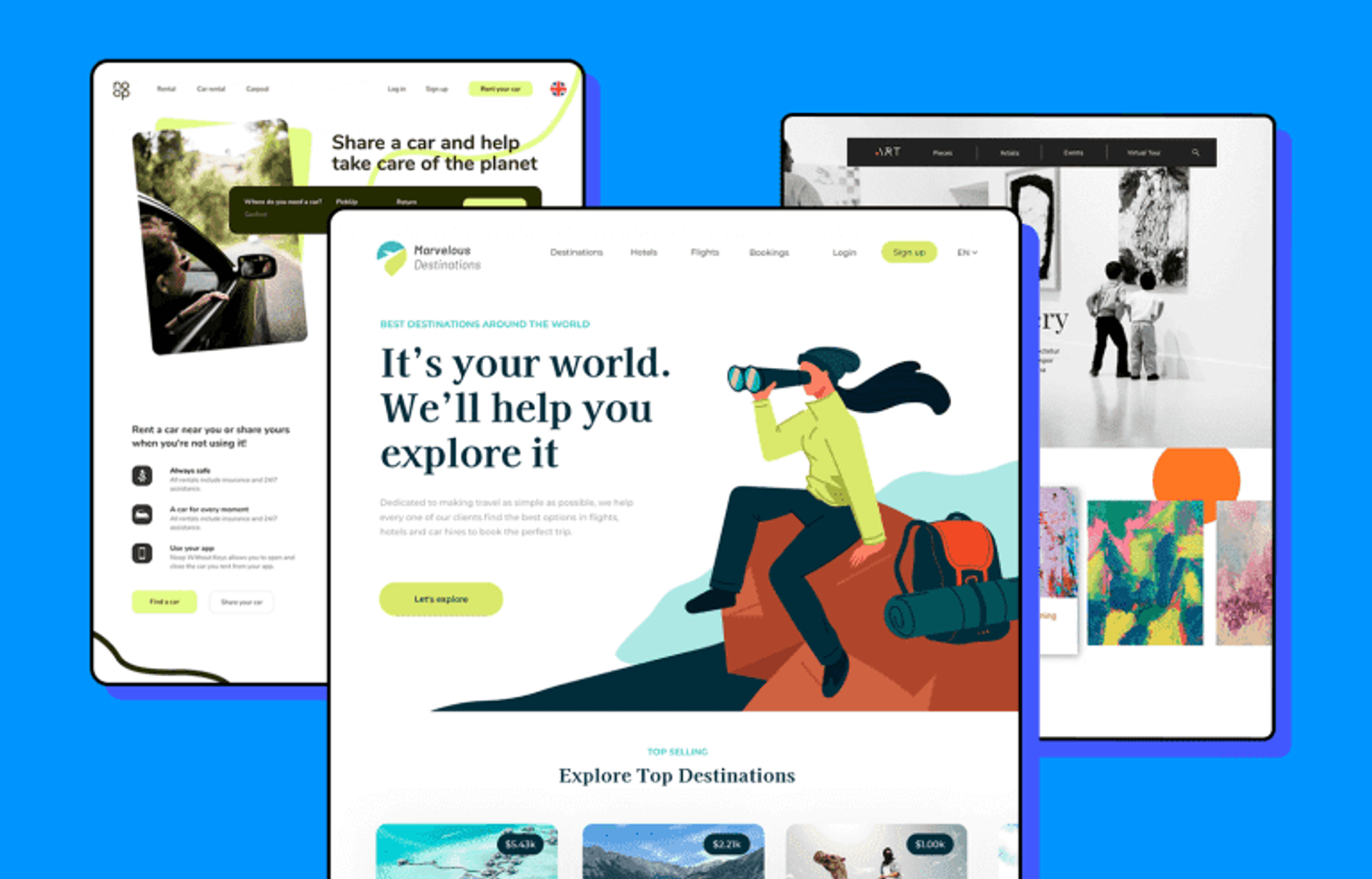The Most Effective Kinds Of Website Design to Boost User Experience and Involvement
In the ever-evolving landscape of digital communication, the performance of Web layout dramatically affects individual experience and interaction. Various design techniques, such as minimalist, responsive, and interactive formats, each deal one-of-a-kind benefits that can cater to diverse individual needs.
Minimalist Web Style
As electronic landscapes end up being progressively messy, minimal website design has actually become a powerful strategy to boosting user experience. This design approach focuses on simplicity, concentrating on vital components while removing unneeded interruptions. By using adequate white area, simple navigating, and a limited shade palette, minimal style cultivates clearness and guides user attention to essential content.
The core concept of minimal website design is to develop a seamless interaction for individuals. By decreasing cognitive lots, individuals can quickly understand info without really feeling overwhelmed. This straight technique not just enhances use but additionally encourages engagement, as visitors are more probable to check out a website that is very easy and aesthetically appealing to navigate.
In addition, minimal style typically stresses typography and imagery, using these components tactically to convey messages effectively. In significance, minimal Web design is not just a trend; it is a thoughtful methodology that acknowledges the relevance of user-centered style.
Responsive Web Design
In today's diverse digital environment, responsive website design has come to be vital for developing a smooth user experience throughout a wide range of gadgets. As customers access sites on smartphones, desktops, laptops, and tablets, the capability of a web site to adjust its layout and material to various screen dimensions and resolutions is crucial.
Receptive Web style employs versatile grids, images, and CSS media inquiries to guarantee that Web material is presented optimally, no matter of the device made use of. This method not only enhances the visual charm of a site but additionally significantly improves usability. Customers are most likely to engage with a site that supplies a regular experience, as it eliminates the disappointment of needing to focus or scroll excessively.
In addition, internet search engine, including Google, prioritize mobile-friendly sites in search rankings. By adopting receptive design, organizations can enhance their presence and get to a wider audience. This strategy also simplifies internet site upkeep, as a solitary version of the site can accommodate all devices, reducing the requirement for multiple variations. In recap, responsive website design is a basic method that improves individual experience, engagement, and overall contentment.
Interactive Website Design
Responsive website design prepares for boosting individual experience, yet interactive website design takes this an action additionally by involving users in a more vibrant way - Aligned Position Web Design. By incorporating aspects such as animations, clickable prototypes, and real-time comments, interactive Web design astounds customers, drawing them into a richer browsing experience
This technique not only cultivates interaction but also motivates individuals to discover material actively instead of passively consuming it. Strategies such as gamification, where users earn incentives for finishing tasks, can substantially improve the moment invested on a site and improve total fulfillment. In addition, interactive functions can simplify intricate details, making it a lot more satisfying and digestible.

Integrating interactive style elements can likewise bring about higher conversion rates, as customers are most likely to involve with a website that proactively involves them. Aligned Position Web Design. Eventually, interactive Web layout transforms individual experiences right into memorable journeys, making sure that site visitors return time after time
Flat Style
Identified by its minimalistic strategy, level layout emphasizes simplicity and functionality, removing unnecessary aspects and focusing on important functions. This design viewpoint focuses on use, guaranteeing that users can navigate interfaces with simplicity and effectiveness. By utilizing a clean visual, flat design eliminates the clutter typically located in a lot more luxuriant designs, consequently improving individual concentrate on content and capability.
The characteristic of level style lies in its use vibrant shades, simple typography, and geometric shapes. These components add to a visually appealing user interface that is both friendly and contemporary. Furthermore, flat layout promotes see post a sense of clearness, enabling users to recognize crucial activities and information without distraction.
In addition, level design is specifically efficient in responsive Web layout, useful content as its simplicity equates well throughout different devices and display sizes. The lack of complex appearances and gradients minimizes filling times, which is crucial for keeping user involvement. As electronic landscapes remain to evolve, flat design stays a relevant option for developing easy to use sites that boost general experience. By concentrating on necessary features, flat style not just satisfies customer needs but additionally encourages seamless interaction, making it a crucial element of effective Web layout methods.
Flexible Website Design
Flexible Web design customizes the individual experience by producing several dealt with formats tailored to different screen sizes and devices. Unlike responsive style, which fluidly changes a solitary format, flexible layout uses distinctive formats for specific breakpoints, making sure optimum discussion on numerous systems. This strategy permits developers to concentrate on the one-of-a-kind characteristics of each device, enhancing usability by providing specifically what customers need based on their context.
One of the primary benefits of flexible website design is its ability to enhance load times and performance. By offering customized material and images that fit the user's tool, internet sites can decrease information usage and improve loading rates. This is specifically valuable for customers with slower links or limited information strategies.

Furthermore, flexible design assists in an extra controlled and constant branding experience. Given that designers produce numerous layouts, they can guarantee that the aesthetic components straighten with the brand's identity across various platforms - see here now Aligned Position Web Design. This results in a natural customer experience, boosting involvement and promoting user retention
Final Thought
Minimalist layout cultivates quality and focus, while responsive design makes certain flexibility throughout different devices, promoting accessibility. Jointly, these style comes close to add to the production of easy to use environments that not only boost fulfillment however also drive higher conversion rates, emphasizing their vital significance in modern Web design approaches.

Minimal layout cultivates quality and emphasis, while receptive layout makes certain adaptability throughout numerous devices, advertising accessibility. Collectively, these design approaches add to the production of straightforward environments that not only improve satisfaction but additionally drive greater conversion prices, highlighting their important value in modern Web design methods.
Comments on “Aligned Position Web Design: Building Beautiful and Functional Websites for Your Business”